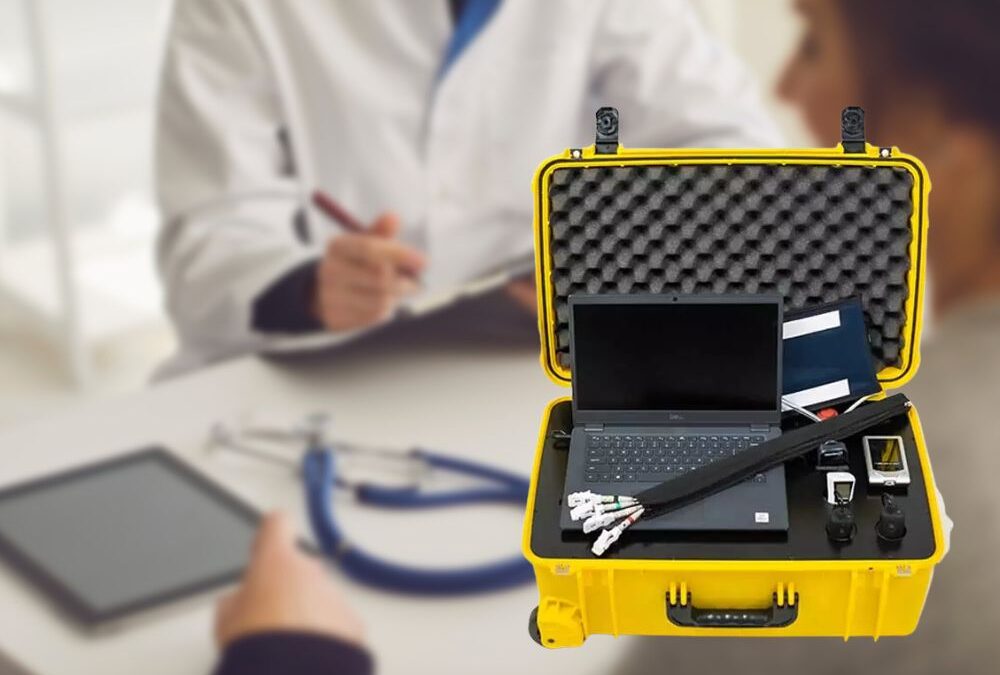It is not unusual for people to assume that telemedicine equipment is little more than video screens with built-in audio systems. We tend to think of telemedicine as an exercise that only involves having a video chat conversation with the doctor or nurse practitioner. But modern telemedicine is so much more.
The equipment we make is designed to take telemedicine to the next level. Most of our telemedicine solutions do include video screens with on-board audio. But most of our solutions also include diagnostic tools. That is where the real difference lies.
Video Screen Functionality
The most basic piece of telemedicine equipment is the video screen. But do not limit your thinking simply to videoconferencing. Screens have other functions, too. For example, implementing telemedicine as a part of a corporate wellness program could mean setting up a number of video screen kiosks inside the company health clinic.
The kiosks facilitate patient check-in. They collect patient information without the need for a human receptionist. The same kiosk can be used to request a prescription refill, set up a future appointment, and so on.
Telemedicine Diagnostic Tools
Designing telemedicine kiosk functionality to mimic an in-office visit requires on-board diagnostic tools. This is where the equipment gets exciting. A basic kiosk might offer a digital thermometer, stethoscope, and blood pressure cuff. But why stop there? Throw in a glucometer for on-the-spot blood tests. Go the extra mile and build in an auto scope, pulse oximeter, and EKG/ECG capabilities.
We incorporate diagnostic equipment so as to allow patients to enjoy the full experience they would otherwise have to go to the office for. From the doctor’s perspective, diagnostic capabilities provide real-time information necessary for diagnosis and treatment recommendations. Without the information that diagnostic tools provide, it can be difficult for doctors to get the full picture.
Administrative Equipment and Software
Rounding out the list is the administrative equipment and software that makes advanced telemedicine kiosks the next generation of telehealth delivery. Simply put, this is the computer equipment that drives our kiosks.
Computer equipment and software collect data and transmit it over a secure network to the provider’s system. It collects and transmits electronic health records. In some cases, it can even take payments.
There are also computer systems that give remote personnel access to provider software and databases. For instance, imagine a remote clinic furnished with a dozen kiosks, staffed by nurse practitioners, and registered nurses. Staff have separate computer equipment that allows them to do what they need to do.
Equipment to Practice Remotely
It is extremely difficult to apply a narrow focus to telemedicine equipment. Virtually any piece of equipment utilized to provide remote healthcare delivery is considered telehealth equipment. Everything from tablet computers to cell phones and full healthcare kiosks qualify.
What makes a piece of equipment desirable is its ability to enhance the telemedicine experience. It is like anything else in healthcare. If a piece of equipment offers no value proposition, there is no point in utilizing it. So when we design telemedicine kiosks and portable kits, every piece of equipment we include needs to add something. There has to be some value, or it gets left out.
Perhaps your only experience with telemedicine is the one or two video chats you had with your doctor during the COVID pandemic. On the other hand, maybe you have seen it all at this point. Either way, telemedicine equipment and software continues to evolve as our industry discovers even better ways to do things. That evolution is leading to better and more effective telehealth solutions for corporate, retail, and private practice applications.


Recent Comments